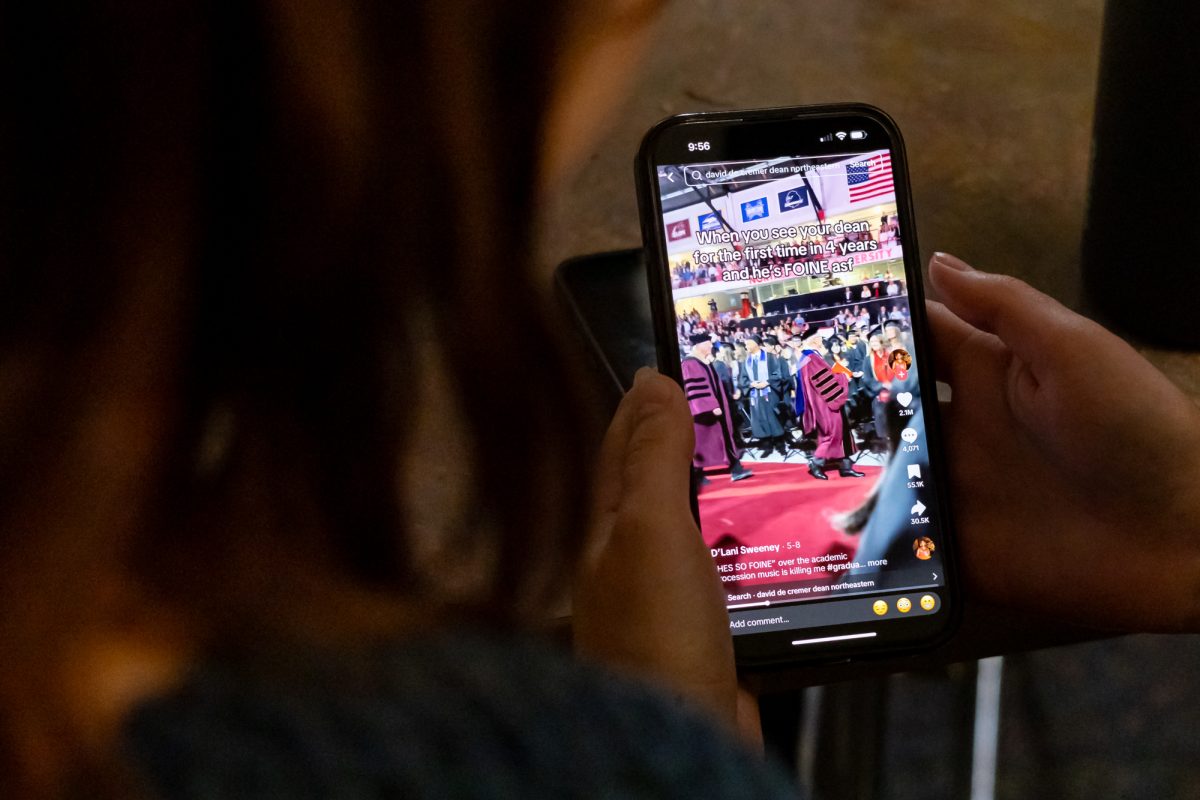
By Katherine Dopler, News Correspondent
Northeastern’s Gallery 360 is hosting an installation by visual artist Robin Masi and musician Ken Field called “The Witness Project” — a record of the spiritual aftermath of the terror attacks on the World Trade Center, Pentagon and Flight 93. The exhibit combines visual and aural piece.
In a statement on her website, Masi said she wanted to convey the sense of presence she experienced during her several visits to ground zero over the past few years. Among the buildings represented in the exhibit are St. Paul’s Chapel and The Deutsche Bank Building, along with others around the perimeter of ground zero.
Conceptual costumes and a priest’s vestment are also represented in the exhibit. They are joined by photographs, drawings and quotes from interviews with those who were in New York City on 9/11. One installation carries 144 wedding rings, the same number of those found in the aftermath of the attack.
Masi debuted “The Witness Project” at The Fitchburg Art Museum as a featured artist in the museum’s group show, “A Nation Mourns and Artists Respond,” last fall.
Field’s sound installation is an important emotional component to the exhibit. The noises were instantly recognizable to Margarita Kruchinskaya, currently a sophmore at the School for the Museum of Fine Arts, a NY native who visited the installation. She was able to distinguish the sounds of the subway as unique to her city and she recognized the gong that begins the annual moment of silence known to NYC public school students attending school within the last ten years.
“A particularly interesting sound in the installation is the sound of an electric saw or drill buzzing,” said Kruchinskaya, who was at school in Brooklyn when the planes hit the towers. “At first this sound gives the viewer a sense of fright and worry. It sounds destructive and negative, but then it sinks in that the sound is just one of a construction site, the reconstruction of the towers.”
Audio interviews with New Yorkers and a priest from St. Paul’s Chapel are featured between the pieces of music that Field composed.
Both Field and Masi will be present at the installation Sunday, Septemper 11 from 12:00 to 5:00 p.m.
Although many current Northeastern students were in grade school at the time, many have a vivid memory of the day. “The Witness Project” causes the viewer to recall their own experience and to remember the feelings they had about what happened, whether they were in the city, had loved ones nearby, or were witnessing the event from their television at home.
Jordan Cunningham, an international affairs major, was in class at the time and, like Kruchinskaya, was picked up from school immediately after the attack. Both students had remarks regarding the confusion and shock of that day, and agreed the exhibition conveyed that feeling well. Cunningham found the installation moving and thought-provoking, and said that it brought her to consider an event that she hadn’t thought about for some time.
“I particularly liked the multimedia elements of the exhibit, like the recycled garments meant to represent those who were lost or performed respite for the rescue workers,”Cunningham said.
One particular piece from the installation is interactive and borrows from the Latin American tradition of pinning milagros (little miracles) on a vestment after a pilgrimage. Next to one of the dresses sits a bowl with charms. The viewer is invited to pin as many charms as they wish to offer up a prayer to those who lost their lives that day. Since 2001, the dress has collected over 500 of these charms.
“The Witness Project” began Aug. 22 and will run through Sept. 13.








